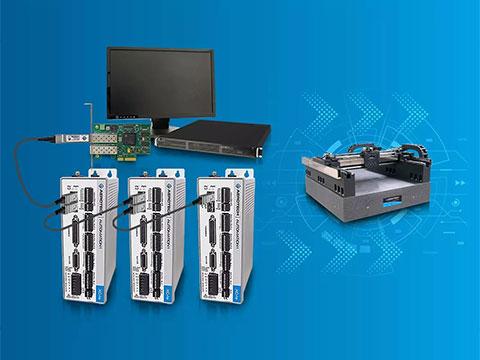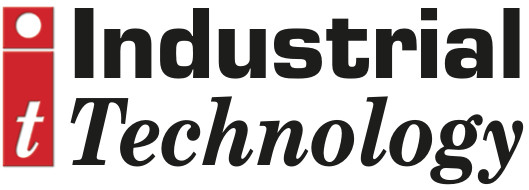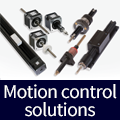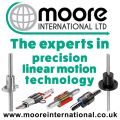
Posted to News on 10th Nov 2023, 16:30
The art and science of machine design

As an integration partner, Aerotech supports its customers from an initial idea to turnkey automation systems.
“A successful machine design usually starts with a sheet of paper and a sketch. What matters beyond that initial idea depends on the requirements of your system,” explains Uwe Fischer, marketing manager for Europe at Aerotech.
The motion control experts at Aerotech not only provide customers with components and controls, but also form partnerships to create fully integrated, industry-specific automation systems.
Since 1970, Aerotech has supplied standard product solutions such as motors, drives, controls and positioning tables. Custom-designed motion subsystems including positioning systems on granite structures and vibration isolation, as well as external measurement systems.
Fully integrated systems are turnkey machines developed together with customers to carry out an automated process. These include not only precision components, manufactured in-house for motion control, but also full automation integration, for example parts handling, process instruments, safety elements and customised software.
Know your customer
As an integration partner, Aerotech takes on a variety of tasks for its customers. For components and sub-systems this involves working on key requirements to meet performance criteria, Aerotech particularly shines for turnkey systems where we can take an idea through development of the machine concept, detailed requirement definition, to the design and manufacture of the end product.
“The requirements phase is one of the most important and must be managed precisely. If things go wrong in the further course of the product design, it can usually be traced back to inadequacies in this phase, is the experience of our experts,” explains Fischer. “To give an example, with a laser cutting machine, they first look at how to handle the laser itself and the different types of motion needed to cut.”
At Aerotech, process requirements are developed via a top-down process, ie the experts ask themselves specifically for whom they are building the system. In which industry is the company active and what is being manufactured? Who will work on the machine later and for what purpose? How big or how small does the machine have to be designed? All this is needed to work out the user and product profile.
“Aerotech works with a wide range of industries, all of which have their own unique user and requirement profiles – these can be test or inspection systems for the semiconductor industry, or government-funded research institutions with scientific users,” explains Fischer.
Safety first
“Our design experts start a broad risk assessment, and then get further and further into the details. From the results, they then derive the individual control measures” says Fischer. Basically, the more complex the system, the more demanding the process of verification and validation.
Even before the product goes into operation, it is extensively tested by Aerotech. Experts verify and validate the individual stages using checklists and pre-determined tests that take into account both the original idea and all the typical industry requirements. Very important is the safety assessment during use.
In the cooperation with clients, the expected return on investment often plays a role. Private companies are usually oriented towards the return on investment. For scientific companies, is it more a question of social advancement, international recognition or specifically how many scientific papers can be produced with the help of the machine.
Based on the user needs, Aerotech and the customer then decide on an appropriate budget together. The first step is to define the entire process to be carried out by the machine. This also includes the expected duration for maintenance, set-up times and, international guidelines and standards. And then it continues according to the top-down principle into the system requirements, ie into a very detailed elaboration of technical specifications and functionalities.
Fischer says: “Aerotech experts first draw a diagram with the individual areas and stakeholders that are affected and then develop the product environment from this. Then they turn the whole thing upside down and start at the bottom with the primary process.”
This, is Aerotech’s basic groundwork with the client and can be seen as an application for further collaboration. “Most customers already come to Aerotech with a rough idea, but often have no idea of what the process behind it should looks like. Our experts then ask very specifically what kind of movement is needed. From the answers, they develop the primary process and decide how to specify the movement system.”
Taking it all in
Then we move on to the secondary process requirements. “In addition to taking into account applicable standards and safety guidelines, we look at the wider needs of a full machine, for example, consideration of the material to be processed or whether an inspection system is to be integrated into the laser cutter. It must also be clarified how the individual specifications can be transferred to the control element.”
A secondary process could consist of non-critical axes that must also be controlled. For example, secondary axes could trigger additional motion related to the changeover of the workpiece. Such an operation, while not requiring the highest performance, should at least be integrated into a cohesive control architecture where everything comes back to the same point. This in turn could then result in further requirements for other functions such as integration with emergency stop functions.
“There are very specific expectations in the control market today and, therefore, also for Aerotech as an integration partner,” continues Fischer.
In addition, purely operational considerations become relevant, for example usability and functionality. How easy can the machine be set up, tuned and made usable? How should the control system be designed so that it is easily understood by users? Can maintenance technicians also interact with the system when it comes to carrying out preventive and reactive works?
“Instead of a series of semi-individually designed applications, our experts prefer to develop a common, high-performance platform that is flexible and easy to modify,” says Fischer. “If the customer’s process changes or further industry-specific requirements become necessary, Aerotech can easily meet them with the help of easy modification.”
Precision and high throughput
Today’s systems are typically about performance – especially performance that increases throughput. In Aerotech’s case, this means ensuring that products achieve the highest possible process speed while maintaining a high precision motion profile. So, in addition to point-to-point motion, known as static performance, dynamic performance must also be considered.
A linear stage, for example, can move back and forth for days without any problems. But, roll, pitch and yaw movements occur in the actual movement. So how straight and flat do the motion axes have to be for the whole process to work smoothly?
If, for example, the work point is 300 mm above the stage and this results in an error of about one milliradian, it may need to be important to take a closer look at the operating point.
“With a single-axis system with a single work point it is still relatively easy to calculate this point,” says Fischer. “However, when considering a multi-axis system, such as a gantry solution, Aerotech needs to consider the errors of multiple axes. This is followed by a detailed analysis of the error build-up, where we work out how to control the error through calibration, axis corrections and other techniques.”
The control system does it
To make the corrections for better system performance, a functional control element is needed. According to Aerotech, 50 per cent of the machine performance falls on the mechanics, while the other 50 per cent is achieved through control. The user has the option of using an I/O-focused controller, a PLC (programmable logic controller) or a motion-focused controller such as Aerotech’s Automation1.
I/O-focused (PLC) controllers are excellent for general automation. However, for more complex tasks, the user-friendliness dwindles. “We hear from our customers again and again that an I/O-focused controller does not offer easy to use interfaces for motion processes,” says Fischer, describing the experience of the Aerotech professionals.
“The controller chosen must be able to handle single-axis point-to-point motion as well as complex multi-axis control. More complicated control algorithms, as developed by experts around the world, must also be easy to integrate.”
In general, a control system will increase the performance of a motion process if it is specifically designed to do so. For example, a PLC is usually sufficient for a simple conveyor belt system. However, if the system is a high-speed laser scanning gantry that synchronises imaging and lasers, a specially programmed motion controller should be used.
However, a combination of both is also possible, ie a motion controller is used for the entire motion process and a PLC for controlling other auxiliary devices. “According to the findings of our machine designers, this is often the most elegant solution – however, you only get the best performance in a motion-based process via motion control,” sums it up Fischer.
Key factors
With regard to the controls available on the market, attention should be paid to four different factors in particular: Usability, flexibility, interfaces and performance. As a rule, users can quickly get an idea of the usability: Is it easy to learn how to use the control system? Is it easy to configure and is much of it self-explanatory, so you don’t immediately forget how it works?
Then there is the question of flexibility: Can axes be easily added or removed from the system? Is it convenient to vary the amperage of the amplifiers? Can a static laser be replaced by a scan head to produce more complex shapes?
The topic of interfaces is as extensive as the questions that become important. In what way will the users use the machine in the future? How will programs be executed? What automations are necessary? How can the machine be switched on and off? Are other devices connected to the machine; can a PLC be integrated, for example? How can the condition of the machine be monitored? Are there possibilities for predictive maintenance?
The last factor is the decisive one and concerns performance. How can the number of units per hour be increased? How do you control position and speed? What about the time implications of modern bus technologies?
Smart motion control
Aerotech’s Automation1 control platform supports its users with the help of virtual assistants, also called ‘helpers’. This makes it easy to configure drives and mechanics within the machine setup helper. The system scans the motion network, identifies the connected devices and then allows you to add the mechanical devices.
“Automation1 has a device catalogue for both Aerotech devices and you can add third-party stages – if the motor data is known, users also get initial calculations for the servo and current loop gains. This is very handy, with just five clicks of the button you can set around 20 parameters,” explains Fischer.
Another advantage in terms of user-friendliness is the automatic calculation of the initial parameters. When setting up a device all kinds of different parameters are set. This saves a lot of time and effort during the initial setup, what used to take hours is now a matter of minutes.
Automation1 also has checklists to guide users through the setup process. Do you want to configure your errors? How would you like to configure your Homing sequence? Configuration of the axes or troubleshooting is thus possible at any time, even for less experienced users.
Those who want to improve the performance level of their machine in no time at all also use EasyTune. “EasyTune goes way beyond the capabilities of Autotune and is sort of Aerotech’s technological equivalent of having someone with 10 to 20 years of control experience sit down and tune the system,” says Uwe Fischer. “In fact, we have a department dedicated to improving EasyTune. Many of the users only use EasyTune to tune their high-performance systems, even the hardest systems to tune get a jump start by 75-80% right off the bat.”
The Automation1 controller is directly integrated into the machine's drive system. For example, if the system has four axes, two gantry spars, a bridge and a vertical for laser motion, then these four drives can communicate with each other via the HyperWire Motion Network. HyperWire is a motion bus specially developed by Aerotech to get the highest possible performance, and a step ahead of any other technology, and minimising timing jitter.
The topic of interfaces was also optimised by the Aerotech experts. “Our feature MachineApps has very clear, customisable interfaces,” Fischer continues. “It takes between five and 30 minutes to set up a relatively complex interface for customers or for demonstration purposes. Our Automation1-experts have also developed a number of modules that are easy to add and automatically configure via drag and drop.”
The advantage of the Automation1 motion control platform is unmistakable: peripheral components such as PLCs can also be easily integrated and controlled via the same platform.
















